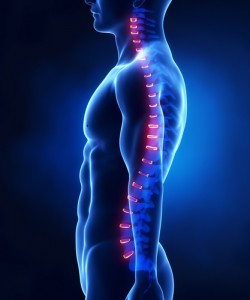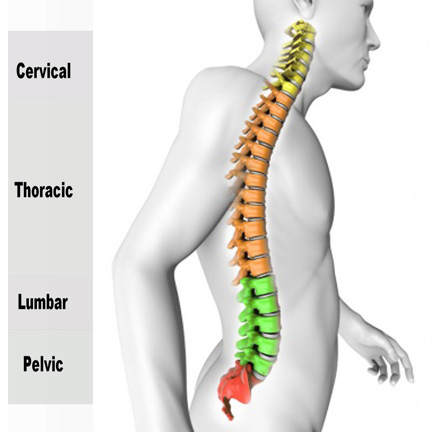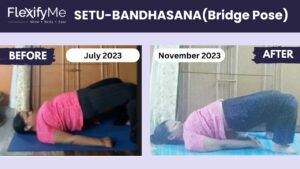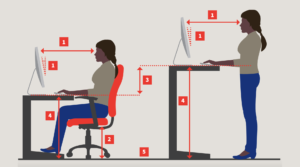Introduction – Unveiling the Secret to a Pain-Free You

Have you ever experienced a nagging backache or a stiff neck after a long day? Perhaps you’ve noticed a slight hunch in your shoulders or a tendency to slouch when you sit. These seemingly minor issues could be related to something far more crucial: your posture.
While good posture often takes a backseat in our daily lives, its influence on our well-being is undeniable. Imagine your spine as a magnificent tree trunk – strong and supportive. When properly aligned, it distributes weight evenly and keeps your body in optimal balance. However, poor posture, like a twisted or leaning tree, can lead to a cascade of problems.
Imagine the consequences of poor posture: chronic aches and pains, not just in your back and neck, but also in your head and shoulders. It can even restrict your lung capacity, making it harder to breathe deeply and fully. Additionally, poor posture can impact your confidence and energy levels, leaving you feeling sluggish and self-conscious.
On the other hand, the benefits of good posture are numerous. It not only reduces pain and improves flexibility but also boosts your mood and energy levels. By maintaining proper body alignment, you can support your spine’s natural curvature, allowing it to function optimally and prevent long-term damage.
This blog delves deeper into the fascinating connection between posture and spinal health. We’ll explore the science behind good posture, its impact on your body, and practical strategies to achieve and maintain it. By the end of this journey, you’ll be equipped with the knowledge and tools to unlock the secret to a pain-free, healthier you.
- According to the American Chiropractic Association, posture can impact your overall health and well-being:
Understanding the Spine – The Backbone of Our Support System
Imagine our body as a complex, interconnected network. The spine, also known as the vertebral column, plays a crucial role in this network, acting as the central pillar that provides support, structure, and flexibility. This intricate bony structure, composed of 24 individual vertebrae, stretches from the base of the skull to the pelvis, forming the foundation for our entire body.
Understanding the Curves: Not surprisingly, the spine isn’t perfectly straight. Instead, it boasts a natural S-shaped curvature that plays a significant role in its functionality. These curves can be further categorized:
- Cervical curve (neck): This gentle inward curve provides flexibility and support for the head, allowing us to nod, turn, and tilt it smoothly.
- Thoracic curve (upper back): This outward curve acts as a shock absorber, protecting the delicate internal organs in the chest cavity. It also helps with breathing by allowing the rib cage to expand and contract.
- Lumbar curve (lower back): This inward curve serves as a weight-bearing curve, distributing the body’s weight and providing stability during movements like bending, twisting, and lifting.
Need Image here (Include a clear and informative diagram of the spine, labeling its different parts, including the cervical, thoracic, and lumbar regions. (Consider using a reputable source like Mayo Clinic for accurate visual representation).
Maintaining Balance: These natural curves work in perfect harmony to maintain proper posture and balance. They also play a crucial role in absorbing shock and distributing stress throughout the body during various activities. However, when these curves become misaligned due to factors like poor posture, injuries, or certain medical conditions, it can lead to a cascade of problems.
Consequences of Misalignment:
- Cervical misalignment: Can cause headaches, neck pain, and even dizziness.
- Thoracic misalignment: Can lead to breathing difficulties, tightness in the chest, and even back pain.
- Lumbar misalignment: Can contribute to lower back pain, sciatica (pain radiating down the leg), and muscle imbalances.
While this section provides a basic understanding of the spine’s anatomy and the potential consequences of misalignment, it’s important to remember that seeking professional medical advice is crucial for diagnosing and treating specific spinal issues.
- Link to a relevant and authoritative source like the National Institute of Arthritis and Musculoskeletal and Skin Diseases to explain the functions of the different spinal curves: “The National Institute of Arthritis and Musculoskeletal and Skin Diseases provides a detailed explanation of the spine’s anatomy and functions.”
Unveiling the Link: Posture & Spinal Health – The Untold Story
We’ve explored the intricate structure of the spine, its remarkable curves, and their vital roles in supporting our body. Now, let’s delve deeper and unveil the fascinating connection between body alignment and spinal health. Just like a perfectly balanced house relies on a strong foundation, our well-being hinges on maintaining proper posture.

Poor posture, unfortunately, disrupts this delicate balance. Imagine slouching in your chair, hunching over your desk, or constantly holding your head forward – these seemingly minor habits can have significant consequences for your spine.
Here’s how poor posture can negatively impact your spinal health:
1. Muscle Strain: When you slouch or hunch, your muscles become imbalanced. Certain muscle groups overwork to compensate for the improper alignment, leading to fatigue, tension, and even pain. This can manifest in various areas, including the neck, shoulders, and lower back.
2. Joint Misalignment: Poor posture puts undue stress on your joints, causing them to shift out of their optimal position. This misalignment can lead to inflammation, stiffness, and even premature wear and tear of the joint cartilage.
3. Altered Biomechanics: The natural curves of the spine play a crucial role in distributing weight and maintaining balance. When these curves are compromised due to poor posture, the entire biomechanics of your body gets disrupted. This can lead to painful conditions like increased kyphosis (excessive rounding of the upper back) and increased lordosis (exaggerated inward curve of the lower back).
4. Breathing Difficulties: In severe cases of poor posture, the rib cage can become compressed, restricting lung capacity and making it harder to breathe deeply. This can lead to fatigue, shortness of breath, and even decreased energy levels.
It’s important to note that scoliosis, a condition characterized by a sideways curvature of the spine, is often congenital or idiopathic (of unknown cause).
However, poor posture can worsen the existing curvature and contribute to pain and discomfort in individuals with scoliosis.
Consulting a healthcare professional is crucial for any persistent or concerning postural issues. They can evaluate your alignment, diagnose any underlying conditions, and recommend appropriate treatment strategies, which may include physical therapy exercises, ergonomic adjustments, or even braces in specific cases.
Remember, good posture is an essential ingredient for a healthy and pain-free life. By understanding the connection between posture and spinal health, and taking steps to improve your alignment, you can unlock a world of comfort, well-being, and optimal physical function.

- Link to a credible source like the American Physical Therapy Association to discuss the specific ways poor posture can impact the spine and overall health: “The American Physical Therapy Association offers insights on how poor posture can affect your spine.
Building a Strong Foundation: Tips for Everyday Posture
Ever feel that slump creeping in as you hunch over your desk or get lost in your phone? You’re not alone. But good posture isn’t just about looking good; it’s about feeling good too! Here are some practical tips to help you cultivate a strong and healthy posture throughout your day:
1. Be Your Own Posture Police: The first step is awareness. Throughout the day, check in with your body. Are you slouching in your chair, hunching over your work, or constantly tilting your head down? Gently remind yourself to straighten your spine, lift your chin, and distribute your weight evenly on both feet.
2. Create a Posture-Friendly Zone: Your environment plays a big role. Invest in an ergonomic chair with good lower back support. Adjust your workstation so your monitor sits at eye level and your keyboard and mouse are within easy reach. For long sitting sessions, use a footrest to elevate your legs and prevent slouching.
3. Stand Up and Move: Sitting for extended periods can take a toll on your back. Take frequent breaks to stand up and move around. Stretch your arms, roll your shoulders, and take deep breaths to keep your body energized and your posture aligned.
4. Build Your Core Strength: A strong core is like the central pillar of good posture. Regular exercise that strengthens your abdominal, back and gluteal muscles can significantly improve your ability to hold yourself upright and support your spine. Exercises like planks, bridges, and yoga poses can be particularly beneficial.
5. Sleep Well, Stand Tall: A supportive mattress and proper sleep posture can make a world of difference. Opt for a medium-firm mattress and avoid sleeping on your stomach, which can strain your neck. The best sleep posture is on your back with a pillow that supports the natural curve of your neck.
Bonus Tips:
- Visualize good posture: Imagine a gentle force gently pulling your head up towards the ceiling, lengthening your spine.
- Walk tall: Stand tall, engage your core, and swing your arms naturally as you walk. Avoid looking down at your phone while on the go.
- Carry weight wisely: Distribute the weight evenly on both shoulders when carrying bags, or use a backpack.
- Seek expert advice: If you experience persistent pain or difficulty maintaining good posture, consult a physical therapist or healthcare professional for personalized guidance and treatment options.
Remember, consistency is key. By incorporating these tips into your daily routine and being mindful of your posture, you can build a strong foundation for a healthier and more confident you.
- Include clear and concise instructions with visuals like images or infographics to illustrate proper posture in various situations (sitting, standing) for additional information on ergonomic considerations: “The Mayo Clinic provides valuable tips on maintaining good posture at work.
Standing Tall: A Journey Towards Optimal Well-being
We’ve embarked on a journey to understand the intricate relationship between posture and spinal health. We explored the fascinating structure of the spine, learned about the consequences of poor posture, and discovered various strategies to cultivate good posture throughout the day. Remember, just like a strong foundation is essential for a sturdy building, good posture is the cornerstone of your overall well-being.
Maintaining good posture isn’t just about aesthetics; it’s about preventing potential health problems and promoting a sense of vitality. By incorporating the tips and strategies discussed into your daily routine, you can significantly improve your spinal health, reduce muscle strain, and even boost your confidence.
For those seeking personalized guidance and real-time feedback on their posture journey, FlexifyMe can be a valuable resource. This platform connects individuals with certified trainers who provide tailored guidance and support to help them achieve their posture goals.
Embracing good posture is an investment in your well-being. Take the first step today and start building a strong foundation for a healthier and happier you!


